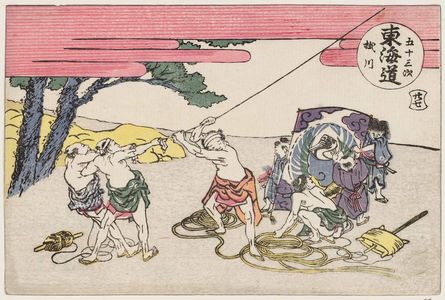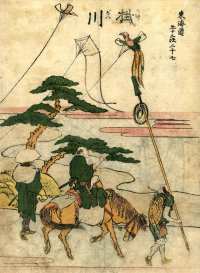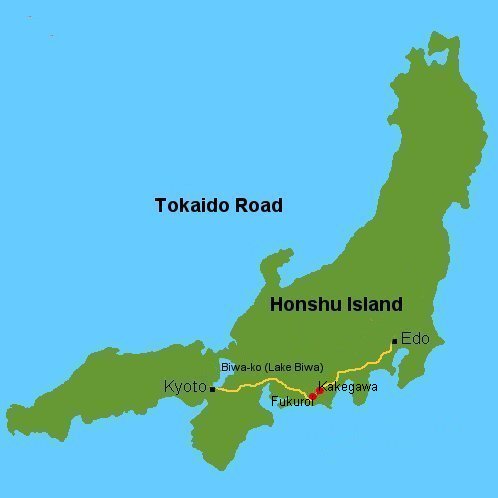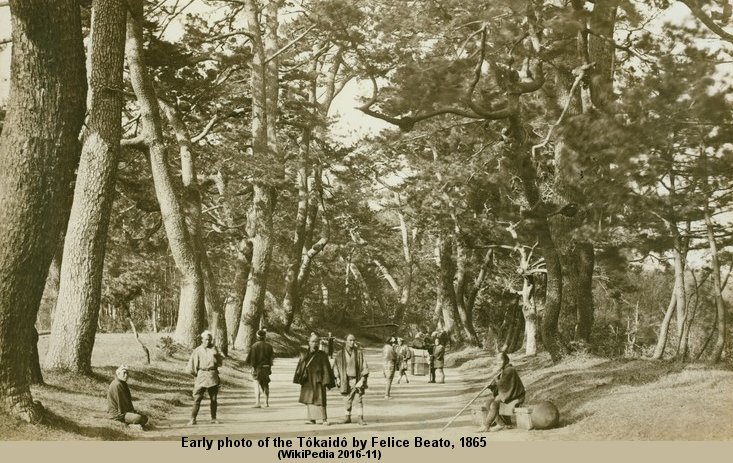| |
HOKUSAI
|
|
The T¨kaid¨ (–|º£µÀ - literally, the 'Eastern Sea Road') was the main road of feudal Japan. It ran for roughly five hundred kilometers between the old imperial capital, Ky¨to, where the Emperor still lived, and Edo (nowadays Tokiyo), home of the Sh¨gun as de facto military ruler.
More detailed information on the Tokaido is to be found in the chapter about Hiroshige's editions of the "53 Stations of the Tokaido" and a plethora of Tokaido series from other leading artists of these times.
As with all well-known woodblock artists of his
time, there are also several editions of the cycle from the '53
Stations of the Tokaido' by HOKUSAI. Six editions contain a
complete sequence of images of all 53 stations:
- 1801 Edition (Tôkaidô gojûsan tsugi ezukushi), unsigned, unknown publisher
- 1802 Edition (Tôkaidô gojûsan tsugi), unsigned, publisher is Iseya Rihei (Kinjudô); Station No. 27 (Kakegawa) with a kite
- 1804 Vertikal Edition (Tôkaidô saishikizuri gojûsan tsugi), unsigned, unknown publisher
- 1804 Horizontal Edition (untitled series), signed 'Gakyôjin Hokusai ga', unknown publisher; this edition has four different print versions
- a 1804 version throughout with kyoka poems;
- a second version in 1804 without poems;
- a third version in 1805 in semi all blue; and
- a 1840's version is similar, without the poems, and with a red or white background color title instead of the original yellow, and a new smaller format for all the large original prints of the series.
- 1806 Vertikal Edition (Tokaido gojusan tsugi), unsigned,
publisher is Iseya Rihei (Kinjudô); Station
No. 27 (Kakegawa) contains kites and the
- 1806 Horizontal Edition (untitled series), signed Hokusai-ga, unknown publisher
 |
 |
| Kakegawa
Station, 1802 Edition (Tôkaidô gojûsan tsugi) |
Kakegawa
Station, 1806 Vertikal Edition (Tokaido gojusan tsugi) |

Fukuroi Station (No. 28) and
Kakegawa Station (No. 27)
in the center of the Tokaido Road
in the center of the Tokaido Road
Copyright 2008 ff: Hans P. Boehme
